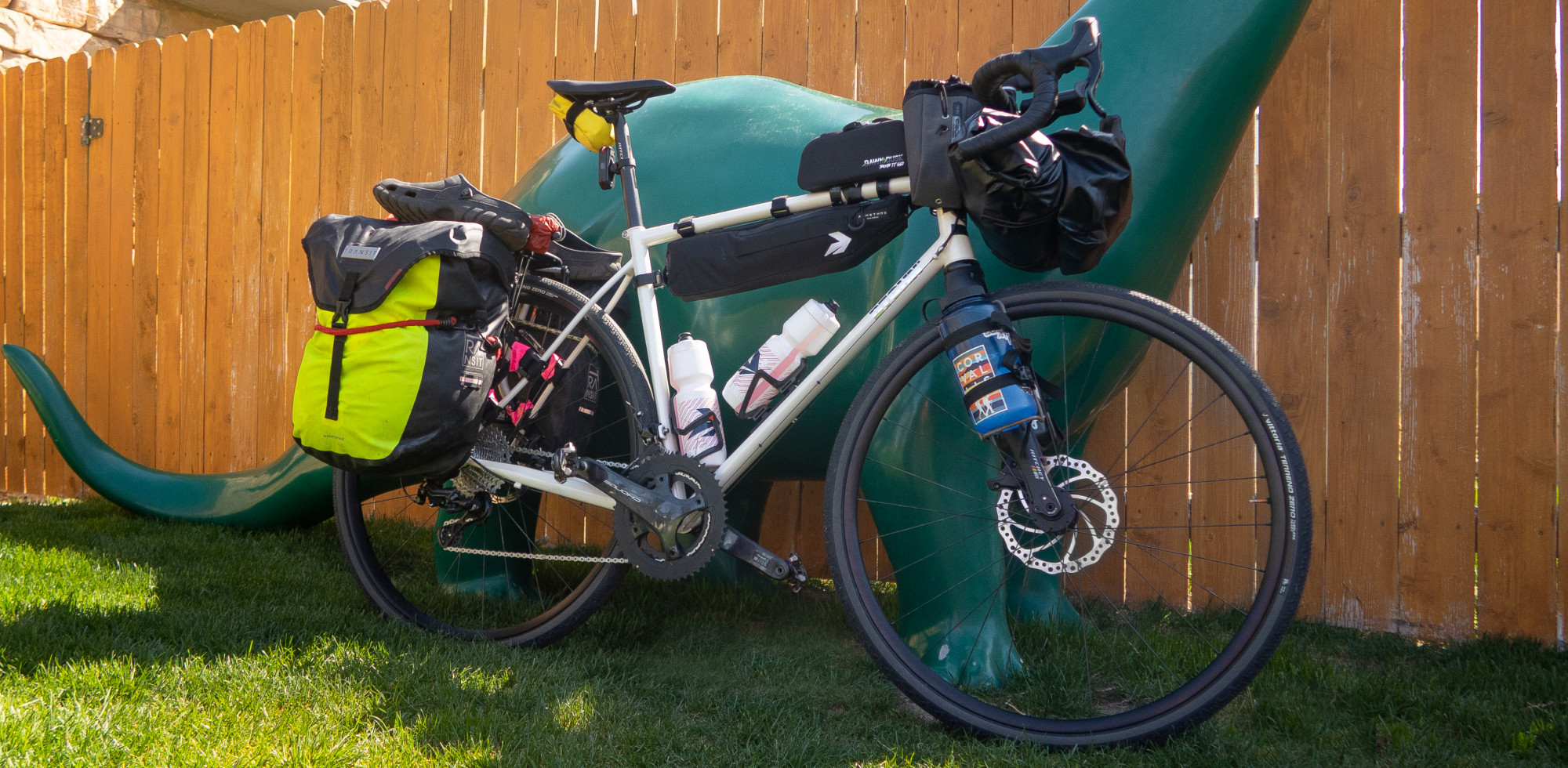Picking Tires for Your Tour
size, width, tread, and pressure all factor in to what is right for you.

Perhaps one of the most important gear selections to make before embarking on a bikepacking trip or tour is your tires. No tire is immune to flats, but you don’t want to spend all your energy and time fixing them. Other factors should get considered as well like traction needs, support requirements, and more. The right tire can reduce your time spent fixing flats and provide you with the best possible experience.
Terrain
Will your ride be mostly pave or mostly off road? Is the pavement good quality and smooth or broken, chunky or laden with debris? Do your off-road riding feature mostly smooth gravel or bumpy single track? It may be impossible to know exactly the conditions of the terrain you plan to ride, even with good research. If all else fails, be conservative and over-tire your bike. If you think a 700x32 slick will do the trick, but have doubts, consider bumping up to a 700x35. Have a 29x2.2 installed, maybe consider bumping up to a 2.4. For most of us, touring isn’t a race. You’ll be grateful you have extra rubber if you need it. The same can be said for tread – more aggressive tread will roll slower, but if it means more traction on technical parts of your trip, the experience will be safer and overall, more enjoyable. When doing your research and picking a tire, it’s helpful to think in rough percentages of off-road vs on-road. 90% on, 10% off would warrant a narrower and slicker tire than a trip with 50% on, 50% off road. This can also be helpful to keep in mind as you plan your route: How to plan your route article.

Tire Size - Air volume
Something to keep in mind is that a bike loaded with your touring kit will weigh more and will handle completely different than the same bike without a load. Err on the side of caution with tires – a wider tires (more air volume) will be more forgiving. You will smash rocks, debris, pothole and other things that you missed or didn’t see. Perhaps the objects are typically a non-issue on your normal bike, but loaded, even with the best bike handling skill, could lead to disaster.

Wider tires with more volume mean get you more pneumatic suspension, more corning grip, more climbing traction and are more forgiving when you encounter the unexpected object. A lesser-known benefit to a higher volume tire is that it requires less frequent inflation. Higher pressure seeps out of a tire more quickly than lower pressure. High volume tires have more volume of air and less air pressure and drop their PSI much more slowly. Portable pumps are more difficult to use that your home floor pump. It’s nice to limit how often you must pump up on your trip.
Tire clearance
Before you go crazy on tire width, make sure your frame, fork and brakes (if you are using rim brakes) have the clearance for the tires you want to use. This could require measuring, looking into manufacturer specifications and testing combinations for yourself. Keep in mind that the labeled width of a tire is not standardized. The width and shape of your rim will also effect the mounted width of a tire.
Spares
Most of us don’t carry a spare tire on our bikes because a spare innertube can fix a late in most situations. However, sometimes flats can be so catastrophic that there is no fix in the field. A spare tire is an expense and is both a large and heavy item to carry, but could save your trip. If the area you plan to ride is known to have sharp rocks and things that commonly cut tires, is very far in the backcountry without support or is away from towns that might have a bike shop to purchase a tire, you might consider carrying a spare. At worst, its piece of mind.

Tubeless
Whether or not you choose to set your tires up tubeless is up to you. You do need rims and tires that are made for tubeless. If you don’t have that, tubes will work. But modern tubeless systems have become so reliable and are more and more common. The wider the tire (less tire pressure) the better they seem to work. If you are using a tire at least 32mm wide or wider, tubeless is a great option for touring. Educate yourself on tubeless before committing to it. It’s still advised that you carry all the same flat-fix kit you would for a tubed system even if you run tubeless.
Our Pick for a Touring Tire
When our team toured from Wyoming to California, they used the Vittoria Terreno Zero in the heavy-duty TNT casing sized at 700x35. The Terreno Zero is a fast-rolling tire with textured shoulders. It’s not pronounced enough to consider it side knob, but there is enough there that it will add some traction on loose-over-hard or wet conditions compared to a full slick tire. On their 1141-mile trip, they only experienced 3 flats and all 3 were reserved to the one rider that was using innertubes. The riders using tubeless had no issues. The route was 90% paved and 10% dirt/gravel. This tire was the perfect choice for this style of tour.

